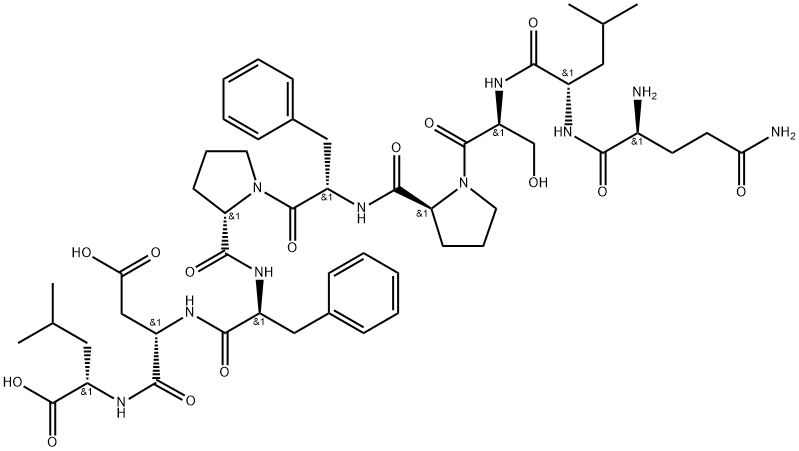159646-83-0
 159646-83-0 結構式
159646-83-0 結構式
基本信息
L-Leucine, L-glutaminyl-L-leucyl-L-seryl-L-prolyl-L-phenylalanyl-L-prolyl-L-phenylalanyl-L-α-aspartyl-
物理化學性質
| 報價日期 | 產品編號 | 產品名稱 | CAS號 | 包裝 | 價格 |
| 2024/11/08 | HY-P0287 | QL9 QL9 | 159646-83-0 | 1mg | 550元 |
| 2024/11/08 | HY-P0287 | QL9 QL9 | 159646-83-0 | 5mg | 1400元 |
| 2024/11/08 | HY-P0287 | QL9 QL9 | 159646-83-0 | 10mg | 2100元 |
常見問題列表
TCR
Mouse T cell clone 2C recognizes two different major histocompatibility (MHC) ligands, the self MHC K b and the allogeneic MHC L d . Two distinct peptides, SIY (SIYRYYGL) and QL9 (QLSPFPFDL), act as strong and specific agonists when bind to K b and L d , respectively. QL9 binding to MHC L d is influenced by the majority of peptide side chains, distributed across the entire length of the peptide. Findings with both systems, but QL9-L d in particular, suggest that many single-residue substitutions, introduced into peptides to improve their binding to MHC and thus their vaccine potential, could impair T cell reactivity due to their dual impact on TCR binding. T cell activation assays are performed to measure effects of peptide SIY and QL9 residues on T cell function.